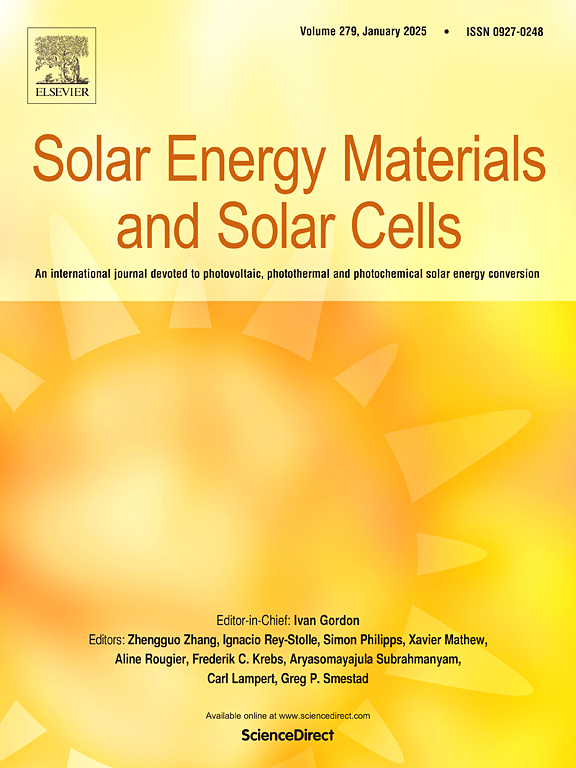IF 6.3
2区 材料科学
Q2 ENERGY & FUELS
引用次数: 0
摘要
在寻求可再生能源解决方案的今天,太阳能是减少碳排放的前沿阵地。为了促进海洋清洁,太阳能动力船舶正在为航运业提供一种环保型替代方案,而抛物面槽式太阳能集热器的热性能功效对于此类船舶来说非常重要。在本研究中,利用基于人工智能的神经启发式混合方法(包括由顺序二次编程局部求解器组成的遗传全局算法),以银磁铁矿纳米颗粒分散在乙二醇中的混合纳米流体为形式,执行了非线性 Oldroyd-B 模型,用于太阳能动力船舶内安装的抛物面槽式太阳能集热器的传热,该集热器具有恒定形式的倾斜磁场效应。通过奥尔德罗伊德-B 混合纳米流体生成的支配偏微分方程首先通过相似性变换转换为非线性常微分方程系统,然后通过物理参数组织的各种情景进行数值求解,以分析速度和热剖面。通过使用亚当斯数值技术生成的参考解对所获得的数值结果进行审查验证,验证结果以图形和表格形式显示绝对误差。此外,还观察到抛物面槽式太阳能集热器的热性能随着磁场参数的增加而提高了 12%。还进行了全面的统计和误差分析,以确认设计方案的适用性。这项工作提供了一个强大的计算框架,用于加强太阳能供电参与系统的热优化,推进海上应用中可再生和有效的能源解决方案。本文章由计算机程序翻译,如有差异,请以英文原文为准。
Thermal optimization of parabolic trough collector in solar powered ship using hybrid Oldroyd-B nanofluid: Artificial intelligence driven heuristics
In today's quest for renewable energy solutions, solar power is at the front line of reducing carbon excretions. To promote seas' cleanliness, solar powered ships are providing an environment-friendly replacement for the shipping industry and the thermal performance efficacy of parabolic trough solar collectors is of great importance for such vessels. In this study, the nonlinear Oldroyd-B model is executed in the form of hybrid nanofluid composed of silver-magnetite nanoparticles dispersed in ethylene glycol for heat transfer in a parabolic trough solar collector fitted inside the solar powered ship with constant form inclined magnetic field effect using artificial intelligence based neuro-heuristic hybrid approach involving genetic global algorithm composed of sequential quadratic programming local solver. The governing partial differential equations generated through Oldroyd-B hybrid nanofluid are first transformed through similarity transformations in the shape of a nonlinear system of ordinary differential equations and then solved numerically to analyze velocity as well as thermal profiles by engaging sundry scenarios organized through physical parameters. The scrutiny of acquired numerical outcomes is validated through reference solutions generated using the Adams numerical technique and this verification is displayed in terms of graphical and tabulated form of absolute errors. Moreover, it is observed that thermal performance of the parabolic trough solar collector is improved by 12 % with an escalation in magnetic field parameter. A comprehensive statistical and error analyses are also performed to confirm the suitability of the designed scheme. This work provides a robust computational framework for strengthening thermal optimization in solar-powered engaged systems, advancing renewable and effective energy solutions in maritime applications.
求助全文
通过发布文献求助,成功后即可免费获取论文全文。
去求助
来源期刊

Solar Energy Materials and Solar Cells
工程技术-材料科学:综合
CiteScore
12.60
自引率
11.60%
发文量
513
审稿时长
47 days
期刊介绍:
Solar Energy Materials & Solar Cells is intended as a vehicle for the dissemination of research results on materials science and technology related to photovoltaic, photothermal and photoelectrochemical solar energy conversion. Materials science is taken in the broadest possible sense and encompasses physics, chemistry, optics, materials fabrication and analysis for all types of materials.
 求助内容:
求助内容: 应助结果提醒方式:
应助结果提醒方式:


